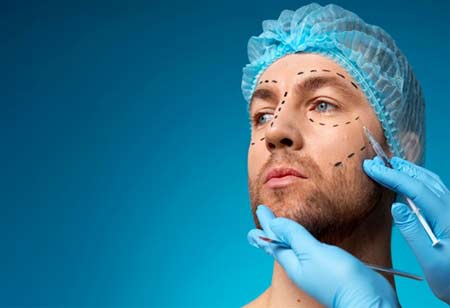Thank you for Subscribing to Healthcare Business Review Weekly Brief
Be first to read the latest tech news, Industry Leader's Insights, and CIO interviews of medium and large enterprises exclusively from Healthcare Business Review
Digital Innovation Accelerates Plastic Surgery Progress in APAC
Plastic surgery in the APAC region is advancing through digital imaging, minimally invasive methods, regenerative therapies, and smarter tools that enhance safety, results, and the overall patient experience.

By
Healthcare Business Review | Tuesday, November 04, 2025
Stay ahead of the industry with exclusive feature stories on the top companies, expert insights and the latest news delivered straight to your inbox. Subscribe today.
Fremont, CA: Plastic surgery services in the Asia-Pacific region are advancing rapidly due to growing demand for high-quality aesthetic and reconstructive procedures. Consumers are increasingly prioritizing natural-looking results, safety, and faster recovery, prompting clinics and specialists to adopt next-generation technologies. Rising awareness, expanding disposable income, and strong interest in personal wellness support continuous growth in this sector. The shift toward precision-driven and minimally invasive techniques highlights the region’s commitment to innovation and better patient outcomes.
Smart Surgical Tools Enhancing Safety and Precision
Plastic surgeons across the APAC region are integrating digital technologies that enhance accuracy and reduce complications. High-definition imaging and 3D simulation enable patients to visualize the expected results before treatment, thereby enhancing communication and improving patient satisfaction. These tools would enable surgeons to plan procedures more precisely, assess anatomical structures with greater detail, and predict postoperative outcomes with increased reliability.
Robotic-assisted systems are gradually entering the field, particularly in complex reconstructive surgeries, where enhanced dexterity and controlled movements can make a significant difference. Advanced lasers are replacing traditional surgical methods for tasks such as scar revision, skin resurfacing, and non-surgical facelifts. Their precision minimizes tissue damage and speeds up healing.
Artificial intelligence also supports diagnosis and treatment planning. AI-driven analysis helps identify the ideal procedure approach, assess skin quality, and monitor healing progress. Surgeons rely on digital data to make informed decisions tailored to individual needs, ultimately improving both effectiveness and patient confidence.
Minimally Invasive Aesthetic Treatments on the Rise
Demand for non-surgical and minimally invasive treatments continues to increase across the APAC region. Patients want cosmetic enhancements without long recovery periods, leading to broader adoption of injectables, energy-based devices, and thread lifts. Innovations in filler materials and delivery techniques create more refined and natural results while maintaining safety standards.
Regenerative therapies are expanding as well. Fat grafting and stem-cell-based procedures help restore volume and repair tissue in a more natural and biocompatible way. These methods support long-term improvements and enhance skin vitality.
The industry also benefits from teleconsultation services that simplify patient engagement. Virtual appointments enable individuals to discuss their concerns, review treatment options, and receive personalized advice before visiting a clinic. This approach enhances accessibility, particularly in remote or congested urban environments where convenience is crucial.
Sustainability and ethical practices are gaining attention within the sector. Clinics are adopting safer materials, reducing medical waste, and strengthening regulatory compliance to build long-term trust with patients.






